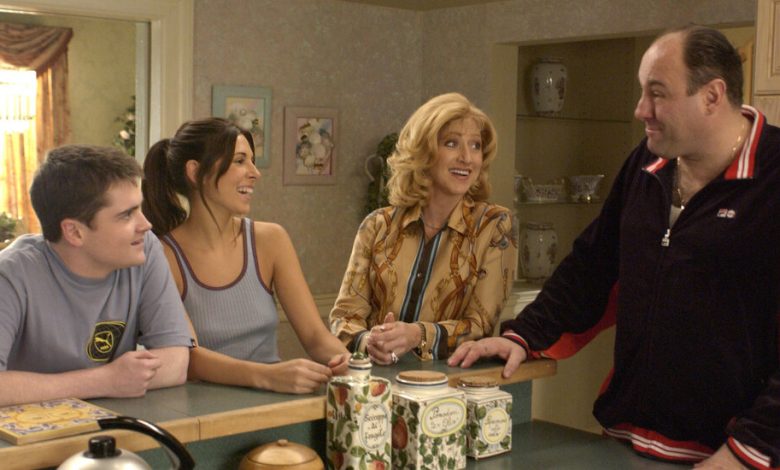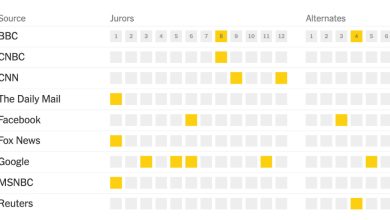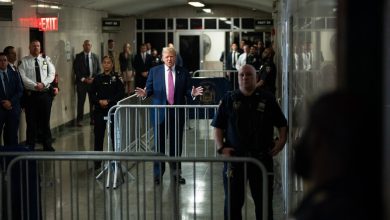Then and Now: Revisiting the Sopranos’ New Jersey 25 Years Later

As much as it was a show about Italian American mobsters, “The Sopranos” was a show about New Jersey. From scenes of domestic life in a North Caldwell McMansion to after-hours debauchery at a strip club in Lodi, the show captured a snapshot of the Garden State in the late 1990s and 2000s, beguiling viewers with its regional authenticity.
“The reality factor for ‘Sopranos’ is what’s so important and so effective,” said Mark Kamine, the show’s location manager and author of the upcoming memoir “On Locations,” which details his time working on the show. “If you’re shooting suburban houses, you can go to Long Island, you can go to Westchester.” But David Chase, the show’s creator, was insistent that his Jersey characters were depicted in the real Jersey.
“I just didn’t think there was any other way,” Mr. Chase, 78, said in an interview. “It was part of the whole thing of hiring only Italian American actors from the tristate area.”
It was a costly decision. When the team first started making “The Sopranos,” which premiered 25 years ago this week, New Jersey didn’t offer tax breaks for productions filming there. But much of the pilot episode and many of the show’s exterior shots were filmed around local homes, businesses and streets.
“Obviously, it paid off,” said Mr. Kamine, 66.
Eventually, some of the interiors — including Tony’s house and the backroom of the Bada Bing — were built out in sets in Queens, New York.
Here’s a look back at some of the show’s iconic Jersey locations, why they were chosen and what’s there today.
Tony Soprano’s House
Built in 1987 at the end of a cul-de-sac in leafy North Caldwell, this 5,600-square-foot McMansion was decadent compared with the home Tony grew up in — fitting for a character who had become wealthier than his parents but felt he was losing touch with their values.
Its placement atop a hill was crucial. Comparing it to the cliché of “the mob guy who goes into the restaurant and wants to sit with his back to the wall,” Mr. Kamine said that the elevation added a protective element to Tony’s house. “No one’s gonna surprise him there.”
The first episode was filmed in the home, though its owner was hesitant about hosting a film crew. “After the pilot, he said, ‘We’re not doing it again. That was a disaster,’” Mr. Kamine said.
He convinced the owner to allow the show to film just the exteriors there, and eventually his attitude shifted. “The fees would go up as the years went by and the show became successful, and he put an addition on his house probably partially thanks to us,” Mr. Kamine said.
Mr. Chase remembered touring several McMansions in preproduction, some of which were “almost comical” in how gaudy they were. One main prerequisite: It had to have a pool, Mr. Chase noted, “for the ducks to land in.”
Over the years, Mr. Chase, who grew up not far from Tony’s house, couldn’t help but notice New Jersey’s evolving landscape — woods being cleared for housing developments, natural beauty becoming commercial streets. Tony’s fascination with the ducks is, in part, his feeling that “something was not right in our capitalist society, that we were destroying nature,” Mr. Chase said.
In 2019, Tony’s home went on the market with a listing price of $3.4 million.
Livia Soprano’s House
A roughly 10-minute drive from Tony’s home, his mother, Livia, lives on a quiet street in Verona, N.J. Built in 1926, her house is smaller, older and lacking the grandiosity that Tony and his younger cohort aim to project. The house becomes a wedge between mother and son when Tony moves Livia into a retirement community.
“That palace you live in, up there on that hill,” Livia tells Tony in Season 2. “Ugh.”
The chain-link fence caging the property symbolized Livia’s chilly, repellent nature. Mr. Kamine said the team would often install the fence when they shot there, only to remove it afterward.
Logistically, the location was ideal. “That house was in the right place for us, production wise,” said Mr. Chase. “It was close to other places we were shooting.”
Bada Bing
The Bada Bing strip club, where Tony and crew partied in the front and did business in the back, is a real-life club called Satin Dolls, on Route 17 in Lodi, N.J. The owner was, fittingly, a man named Tony with mob connections.
“I never feel fully at ease in his office, wondering if it’s bugged,” Mr. Kamine writes in his book. The owner initially gave the show permission to film there while the business was closed, but that proved difficult — the club was open from 11 a.m. to 2 a.m., seven days a week. At first, they’d buy out his lunches on Mondays and Tuesdays, and as the show became more popular, “he would just rub his hands when he saw me coming and be like, ‘how much money are you going to give me this time?’” Mr. Kamine said.
Over the years, Satin Dolls has drawn hordes of fans — even ones that normally wouldn’t find themselves at an adult entertainment club. Vincent Pastore, 77, who played Salvatore “Big Pussy” Bonpensiero, recalled that at one point the club even offered a “Big Pussy cocktail.”
“That guy was cleaning up,” he said.
Satriale’s Pork Store
Satriale’s — the pork store and sandwich shop that Tony’s father took over when its owner couldn’t pay a gambling debt — wasn’t always Satriale’s. In the pilot episode, the hangout was Centanni’s, a real-life butcher shop in Elizabeth, N.J. But the store’s owners told producers that filming was too disruptive to the already thriving business. (It’s still open today.)
In need of a new location, Mr. Kamine found a vacant storefront on a commercial street in Kearny, N.J., that he thought could work. He tracked down the owner, who had bought the place to open up a cleaning company.
“He was like, ‘I’m just starting my business, why would I do this?’” Mr. Kamine recalled. “But it ended being a great deal for him, because we said, ‘we’ll pay you a nice rent to take over the store, and we’ll pay your rent for your office somewhere else.’”
The production designer transformed the storefront into a pork store resembling what was seen in the pilot — including the pig mounted to the roof. The building was demolished in 2007 and is now a parking lot.
Steve Schirripa, who played Bobby Baccalieri, was disappointed when he learned it had been knocked down. “I would have liked to go to Satriale’s one more time, because I’m looking at it, this time, with different set of eyes,” said Mr. Schirripa, 66.
Bucco’s Vesuvio
“It was a great home away from home,” said Mr. Pastore of the restaurant where Tony would regularly sit down with both of his families. “It wasn’t a place where the wiseguys would take their girlfriends. It was a place where Carmela and Tony would go. It was a family restaurant.”
A family restaurant that got blown up. The original Vesuvio, located on the ground floor of a building on the corner of South First Street and Elizabeth Avenue in Elizabeth, N.J., erupted during Season 1. To film the scene, Mr. Chase said, “we added a wing that got blown up that we destroyed,” Mr. Chase explained. “The real restaurant wasn’t touched.”
The name was inspired by Vesuvius, a restaurant Mr. Chase went to growing up. “My parents used to go there on special occasions, and I was there as a kid and it had really good food.”
Today, the location is home to Del Porto Ristorante.
Pizza Land
Each week in the mood-setting opening credits, Tony would drive past this tiny pizza shack in North Arlington, N.J., making it one of the most recognized facades in Sopranos lore — even though no scenes ever took place there. At one point, its previous owner said, they’d ship pies, shrink-wrapped and on dry ice, to fans around the country.
Its current owner, Eddie Twdroos, said he still gets plenty of visitors who want to take pictures — and maybe eat the pizza. After the store’s previous owner died in 2010, Mr. Twdroos was passing by when he saw Pizza Land was shut down. He’d run a few pizza shops before, and he recalled thinking, “This is like a perfect location, and a nice little store with a lot of story behind it.” So he decided to rescue it.
“You want to keep everything the way it is from the show — the same front, the same sign at the top of the store, everything was left the same,” said Mr. Twdroos, 53. “It’s a landmark.”



